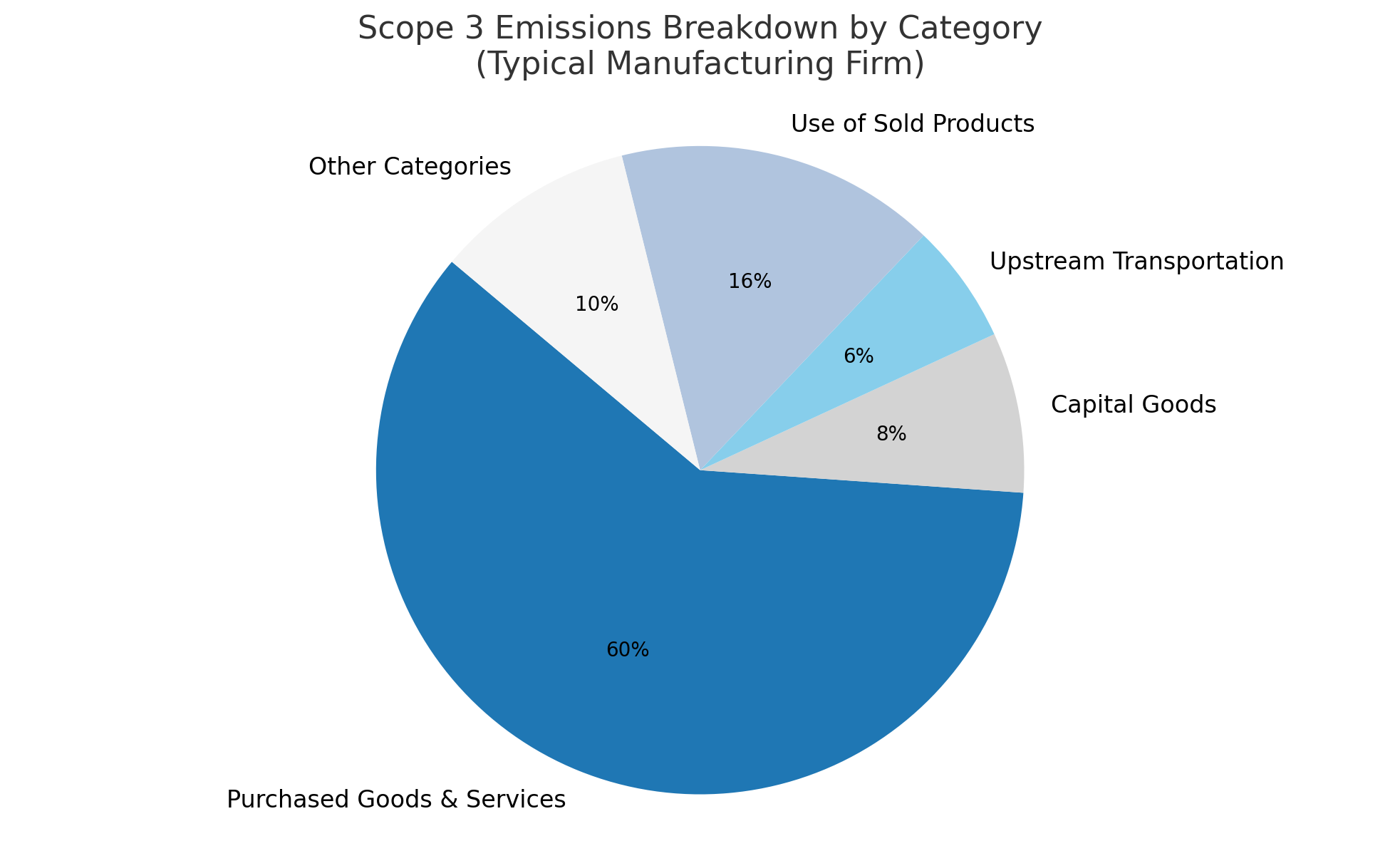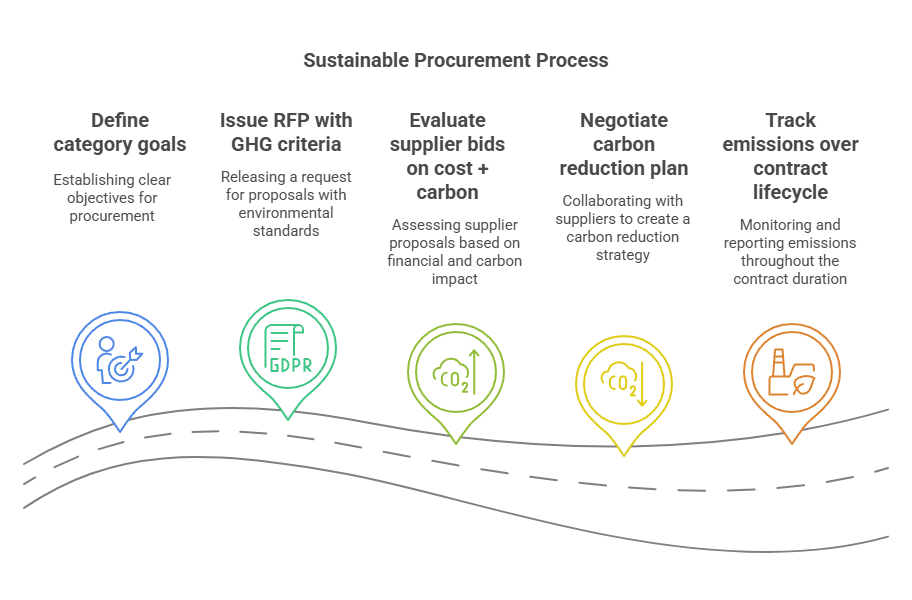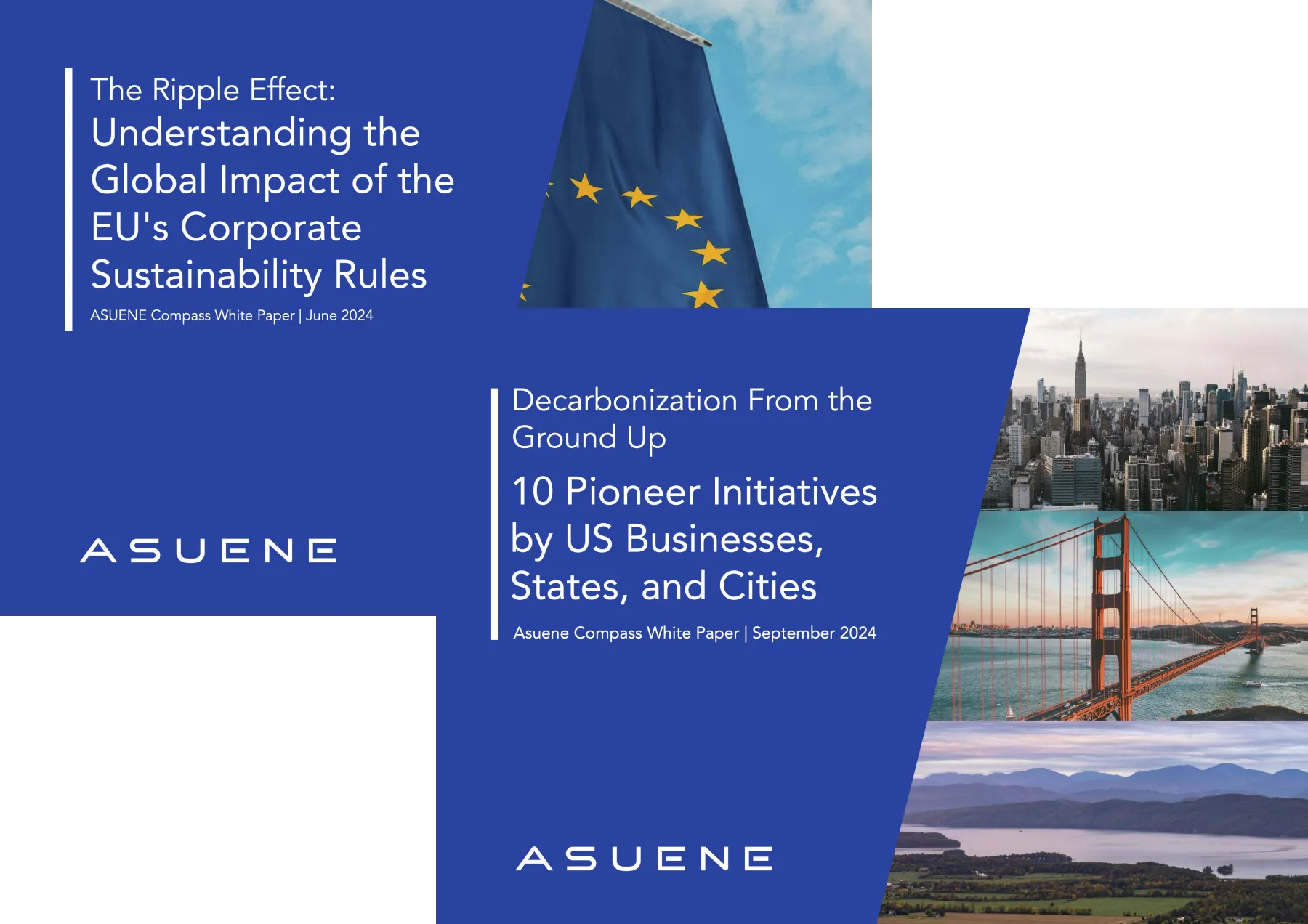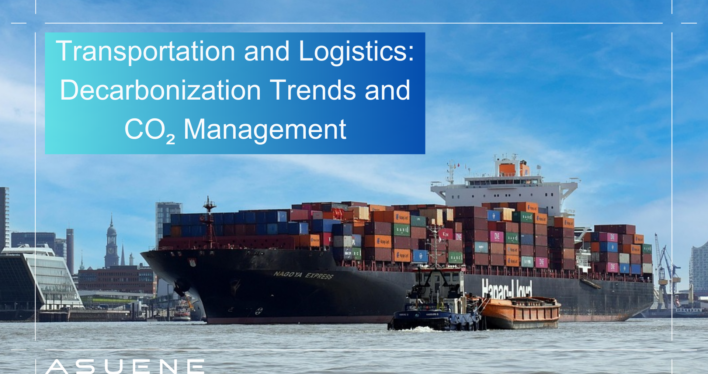- Article Summary
-
As global corporations commit to net-zero targets, Scope 3 emissions — those originating from a company’s value chain — have emerged as the most critical and complex challenge. Often accounting for more than 80% of a company’s total carbon footprint, Scope 3 emissions are deeply embedded in procurement decisions. This article examines how sustainability-driven procurement teams are now at the center of corporate decarbonization strategies, reshaping supplier relationships and value chain structures. It also highlights how digital tools like Asuene’s supply chain carbon management platform can accelerate supplier engagement and carbon transparency.
Understanding Scope 3 Emissions: The Procurement Imperative
Scope 3 emissions are indirect emissions that occur outside of a company’s direct control but within its value chain. These include:
- Upstream: Purchased goods and services, capital goods, transportation, waste
- Downstream: Use of sold products, end-of-life treatment, investments
Of the 15 categories defined under the GHG Protocol for Scope 3, Category 1: Purchased Goods and Services is consistently the largest for most organizations — making procurement the single most influential lever for carbon reduction.
Scope 3 Emissions Breakdown by Category (Typical Manufacturing Firm)

| Category | Contribution to Scope 3 (%) |
|---|---|
| 1. Purchased goods & services | 50–65% |
| 2. Capital goods | 5–10% |
| 4. Upstream transportation | 5–7% |
| 11. Use of sold products | 10–20% |
| Other categories | 5–10% |
For procurement teams, this means carbon is no longer an invisible cost — it is now a key performance metric.
The Shifting Landscape of Sustainable Procurement
In response to both regulatory and reputational pressure, companies are embedding sustainability criteria into sourcing strategies.
Key Drivers:
- Disclosure mandates: CSRD, SEC climate disclosures, and CDP all demand Scope 3 transparency.
- Investor expectations: Climate-focused funds increasingly scrutinize upstream emissions and supplier ESG performance.
- Customer pressure: B2B buyers are including emissions requirements in supplier RFPs and scorecards.
- Financial risk: Suppliers with high carbon intensity face rising operational and capital costs under carbon pricing schemes.
As a result, procurement professionals are evolving from cost managers to sustainability change agents.
Strategic Levers to Decarbonize Procurement
Supplier Carbon Transparency
The first step is measuring supplier emissions — particularly product-level embodied emissions — using:
- Supplier questionnaires and audits
- Product carbon footprint (PCF) reports
- Third-party emissions databases
- Digital platforms that integrate supplier GHG data
Procurement teams are increasingly using “carbon scorecards” to evaluate suppliers alongside traditional KPIs (cost, quality, delivery).
Case Example: A European electronics company began asking top suppliers to report CO₂e per component. Within two years, over 60% of their spend was covered by verifiable emissions data, enabling hotspot analysis and more strategic sourcing.
Engaging Suppliers in Carbon Reduction
Once emissions baselines are known, buyers can actively collaborate with suppliers to reduce emissions through:
- Material substitution: shifting to low-carbon or recycled inputs
- Process efficiency: supporting energy efficiency and renewables at the supplier level
- Co-investment: funding cleaner technologies in key supply partners
- Capacity-building: offering training or tools to help suppliers report and manage carbon
Suppliers respond better when sustainability expectations are paired with clear incentives (e.g., preferred supplier status, long-term contracts, co-branding opportunities).
Setting Procurement-Based Emission Targets
Leading firms are integrating Scope 3 into procurement KPIs and climate roadmaps by:
- Establishing Category 1 emissions targets as part of SBTi commitments
- Including carbon reduction clauses in contracts
- Developing “low-carbon preferred supplier” lists
- Structuring procurement bonuses or penalties around sustainability performance
Example: A global FMCG company committed to cutting its purchased goods emissions by 30% by 2030, aligning procurement metrics with this goal across all regions.

Integrating Carbon into Procurement Workflows
To operationalize decarbonization, procurement teams must embed emissions management into daily workflows.
Recommended Practices:
- Add emissions as a criterion in supplier selection and RFQs
- Use lifecycle carbon data in make-vs-buy decisions
- Incorporate carbon dashboards in procurement software (e.g., Coupa, SAP Ariba)
- Train buyers in carbon literacy and supplier engagement
Carbon-Integrated Procurement Workflow

- Define category goals
- Issue RFP with GHG criteria
- Evaluate supplier bids on cost + carbon
- Negotiate carbon reduction plan
- Track emissions over contract lifecycle
Digital platforms enable this end-to-end integration and ensure consistency, traceability, and reporting readiness.
Overcoming Common Barriers
| Challenge | Solution |
|---|---|
| Low supplier data availability | Use estimation tools; prioritize top-emitting categories |
| Supplier resistance | Provide support; emphasize business value of sustainability |
| Lack of internal carbon expertise | Train procurement staff; bring in ESG specialists |
| Fragmented IT systems | Use platforms that integrate ERP, procurement, and ESG data |
The Role of Technology in Scaling Sustainable Procurement
Modern procurement platforms now offer carbon tracking modules, but few provide full lifecycle visibility or supplier engagement capabilities.
Advanced carbon management solutions like Asuene address these gaps with features such as:
- Supplier-level emissions dashboards
- GHG estimation for products and categories
- Integration with Scope 3 calculation models (GHG Protocol compliant)
- Alerts for carbon hotspots by spend or material type
- Scenario planning for supply chain restructuring
This empowers procurement teams to shift from reactive compliance to proactive strategy.
Moving from Data to Action: KPIs and Impact
To ensure sustainable procurement delivers value, organizations must track both environmental and business outcomes. Key performance indicators include:
| KPI | Description |
|---|---|
| % of suppliers reporting emissions | Data coverage ratio across Tier 1/Tier 2 |
| Carbon intensity per category | CO₂e/ton or CO₂e/USD for major spend areas |
| Emission reduction vs baseline | Progress against Scope 3 target |
| % spend on low-carbon suppliers | Alignment of procurement spend with climate goals |
| GHG-adjusted supplier ranking | Scorecard that integrates cost and carbon together |

A Strategic Opportunity for Procurement Leaders
Sustainable procurement is no longer a niche function — it is a board-level expectation. As global buyers of trillions of dollars in goods and services, companies have the power to reshape entire industries by demanding low-carbon, ethical value chains.
Procurement leaders who embrace this role will:
- Build more resilient and future-proof supply chains
- Improve access to ESG capital and premium markets
- Differentiate their brands through credible sustainability performance
Asuene: Your Partner in Scope 3 and Supplier Emissions Management
To help companies unlock the full value of sustainable procurement, Asuene provides an integrated solution for Scope 3 emissions tracking, supplier engagement, and carbon intelligence.
With Asuene, procurement teams can:
- Map supplier emissions at scale, even with incomplete data
- Automate Scope 3 (Category 1) calculations aligned with GHG Protocol
- Conduct product- or category-level carbon analysis
- Benchmark suppliers by carbon intensity and track progress
- Generate auditable data for disclosure (CDP, CSRD, SBTi)
Whether you’re just starting to build transparency or seeking to lead your sector on supplier decarbonization, Asuene empowers procurement to be at the forefront of climate action.
Download Our Expert Publications!

Why Work with ASUENE Inc.?

ASUENE USA Inc., a subsidiary of Asuene Inc., is a key player in carbon accounting, offering a comprehensive platform that measures, reduces, and reports emissions, including Scope 1-3, with expertise in decarbonization. Asuene serves over 10,000 clients worldwide, providing an all-in-one solution that integrates GHG accounting, ESG supply chain management, a Carbon Credit exchange platform, and third-party verification.
ASUENE supports companies in achieving net-zero goals through advanced technology, consulting services, and an extensive network.
